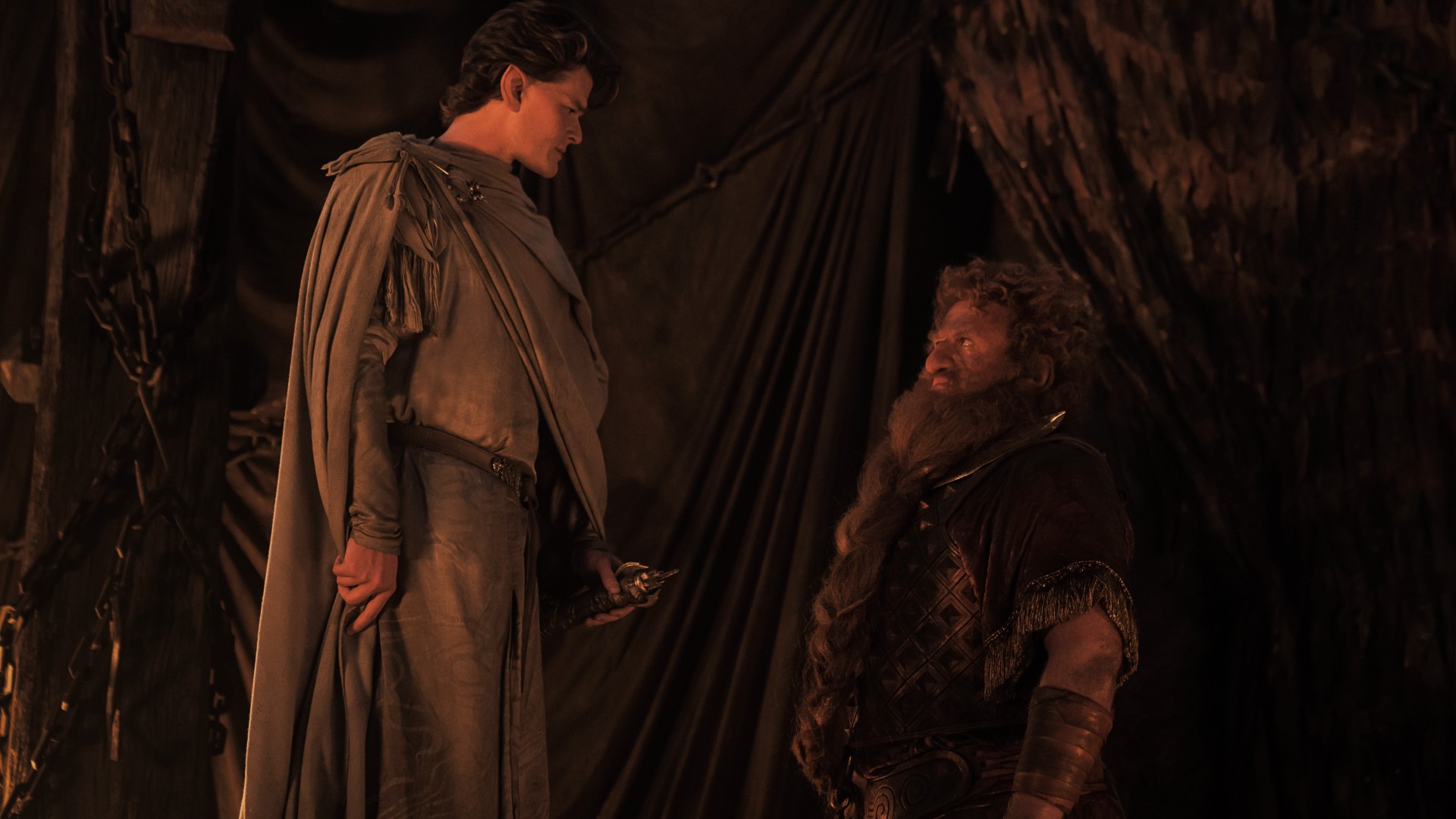This article contains spoilers for episode 4 of The Rings of Power and J.R.R. Tolkien’s works.
In episode 4 of The Lord of the Rings: The Rings of Power, we finally learn what Durin IV (Owain Arthur) and Disa (Sophia Nomvete) have discovered in the Khazad-dûm mines – the precious metal mithril. In The Lord of the Rings universe, mithril becomes highly sought after in Middle-earth both for its beauty and its durability – it shines like silver, is stronger than steel, it’s as malleable as copper, and doesn’t tarnish. While this discovery may seem like a win for Durin IV and the Dwarves of Khazad-dûm in the Second Age, the mining of mithril will eventually lead to the destruction and downfall of the Dwarven kingdom.
Because mithril can only be found in the Dwarven mines of Moria, the haste with which the Dwarves mine mithril throughout the Second Age leads to a rapid depletion of the ore in the mines. By the time Middle-earth reaches its Third Age, the Dwarves have to dig at great depths to retrieve the metal. This leads to them accidentally releasing a sleeping Balrog – a fiery demon-like creature – who destroys Khazad-dûm, kills Durin VI, and forces any surviving Dwarves to flee their ancestral home.
The Fellowship of the Ring in the Third Age encounter this Balrog, known as Durin’s Bane, during their journey through Moria. Gandalf famously sacrifices himself so that the rest of the fellowship can escape the Balrog, and eventually defeats the creature before becoming Gandalf the White.
The Rings of Power isn’t the first time we’ve seen mithril either – the chainmail shirt worn by Frodo (Elijah Wood) and Bilbo Baggins (Martin Freeman) in The Lord of the Rings: The Fellowship of the Ring and The Hobbit: The Battle of the Five Armies, respectively is made of the material. The mithril shirt is given to Bilbo by his friend Thorin Oakenshield (Richard Armitage), who later passes it on to his nephew Frodo. Mithril chainmail is strong enough to save Frodo from being fatally stabbed by a spear – a bruise is all that is left behind by the weapon.
Although Tolkien didn’t write much on the origins of mithril during the Second Age, and therefore we don’t have much to go on regarding how this metal will factor into The Rings of Power moving forward, we do know that the metal was used to forge at least one of the Rings of Power. Galadriel’s ring, Nenya, is the only ring we know for sure is forged from mithril, but given the lack of background on some of the other rings made, the series could decide to have more than one ring forged from this powerful metal.
The Elves also have an affinity for the glittering quality mithril has, using its alloy ithildin to create elaborate gateways and etching that can only be seen in starlight or moonlight. Before the downfall of Khazad-Dûm, mithril is worth ten times its weight in gold, so it’s hard to blame the Dwarves for pushing to mine this metal against Durin III’s wishes to take things more cautiously. After the fall of the kingdom, mithril mining ceases, causing it to be nearly impossible to find and increasing its worth exponentially. That’s why Thorin giving the chainmail to Bilbo is a big deal – not only does the mithril have symbolic value connecting to his heritage as a Dwarf, but it has great monetary value as well.
It’s hard to be excited for Disa and Durin IV’s discovery in The Rings of Power knowing what this means for their future. Since this is a prequel, and what happens to Khazad-dûm is already laid out pretty clearly by Tolkien, there’s not really anything the series can do to change the fate of the Dwarves and their kingdom. However, it will be interesting to see how the series handles this golden age of wealth and prosperity for the Dwarven kingdom and the proliferation of mithril throughout Middle-earth.
